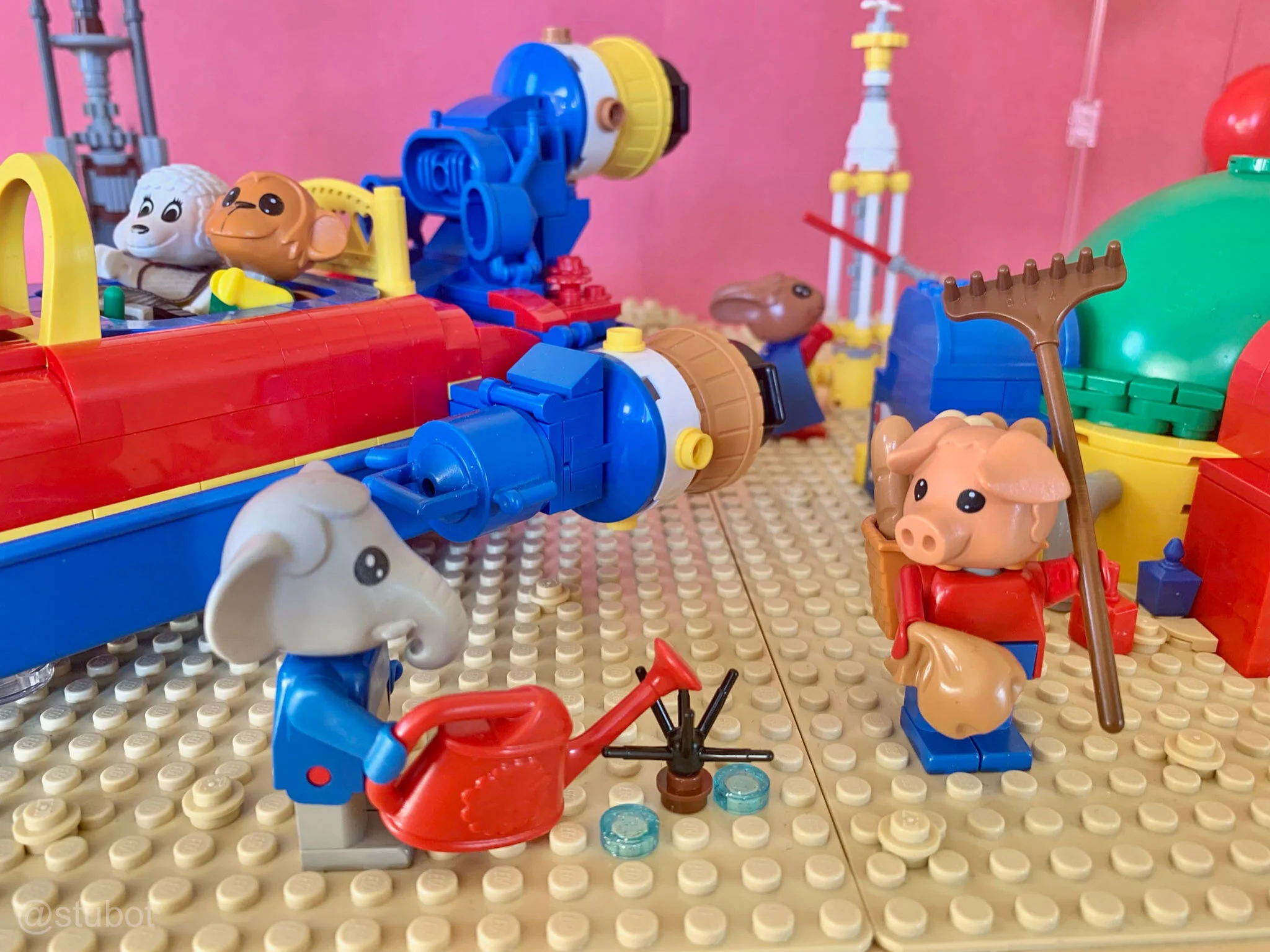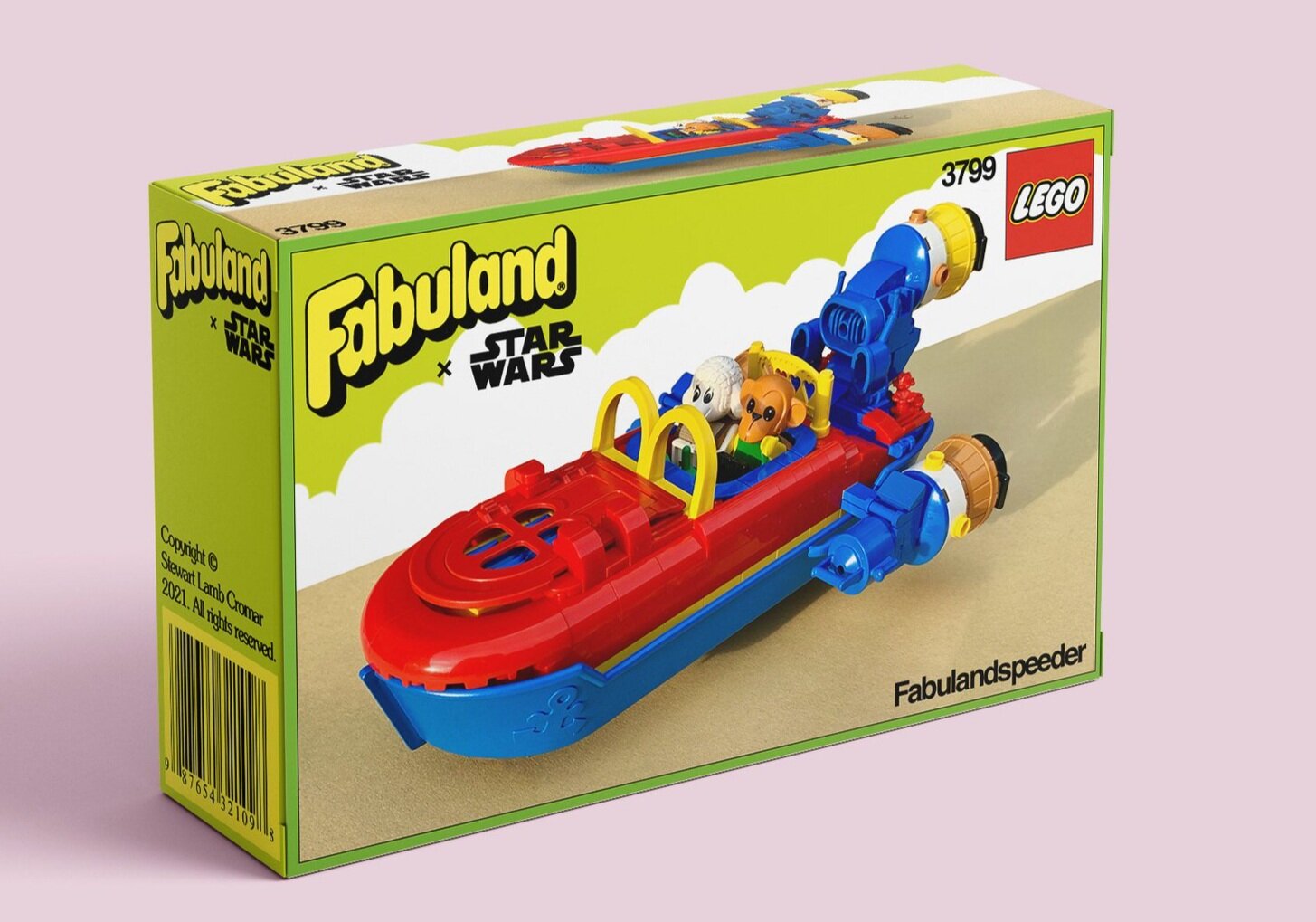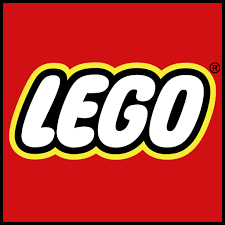Tatooine Tails: The Fabuland Homestead and Landspeeder
/You may have seen Stewart Cromar’s fabulous FabuLandspeeder earlier in the year—he’s now built the Tatooine homestead to join it and has kindly agreed to chat with BrickNerd about his LEGO-building process!
Picture Credit: Stewart Lamb Cromar
Teresa: I get the feeling that you’ve always been into Fabuland and Star Wars. Can you give us a bit of background of your life as a fan of LEGO?
Picture credit: Bricklink.com
Stewart: It’s true. I don’t think I’ve ever really had a dark age. I remember saving up all my pocket money for the whole summer to get a Mortimer Mouse Keychain when I was about 7 or 8 years old. Fabuland was my introduction to LEGO, I spent pretty much all my pocket money on those little cardboard boxes with a fig and accessory in, and I remember watching the cartoons on TV. I did have some LEGO Town a bit later as well, but Fabuland has remained my firm favourite. I still have all my childhood LEGO, even though my family gave away lots of our other toys, my LEGO was special and it survived the clear-outs. My love of the theme has always stayed with me.
My middle name ‘Lamb’ comes from my Mother’s family and so it was inevitable that I got gifted lots of lamb-based things as a child. And Fabuland lambs are my sigfig. The first LEGO Star Wars sets were released just as I started earning money and that was an amazing boost to my interest in LEGO.
Teresa: So, how did this MOC get started?
Stewart: Northern Brickworks LUG ran a challenge called ‘Pimp Your Landspeeder’. I love Star Wars and will shoehorn Fabuland into anything, so I decided to work on that cross-over. I didn’t win the competition, but my model got picked up by blogs and also noticed by some LEGO designers including Justin Ramsden, which was really gratifying. Then when the Edinburgh LEGO Store was announced, I knew I wanted it to go into the Community Showcase, but I also knew that it wasn’t going to be enough to fill the empty space on its own. So I started thinking about a companion piece to expand the scene and challenged myself to build the landscape.
Picture credit: Stewart Lamb cromar
Teresa: Was there a particular seed part that kick-started the homestead build?
Stewart: Tartan LUG took a group trip to Billund in the summer of 2019 and that included my one and only visit to the much-missed Loplet (a cornucopia second-hand shop that has provided many an amazing buy for AFOLs, but has sadly now closed). I came across a version of the Star Wars planet piece. I initially bought it because it was Fabuland green and it had 2013 moulded into the top half. I am always looking for interesting parts in the Fabuland colour palette and 13 is my lucky number.
At that point I had no specific plans for it and it sat in my collection unused until this year. I later learned that the planet was an exclusive given to LEGO employees for their 2013 family day (‘#Familiedage’). It has a subtle world map texture on the top half and I eventually ended up using that half because it was a more interesting piece.
Picture Credit: Stewart Lamb Cromar
Teresa: Once you’d started with that piece, how did the design and build process work?
Stewart: It’s quite a fragile build and it went through a number of iterations and some accidental demolitions—including falling off the table a couple of times! The biggest challenge was managing the offset needed for the dome as the build is not 100% symmetrical, but no one has ever noticed it, so it must be ok!
I knew that I wanted to have some play features in it, so I wanted the inside of the dome to be as open as possible. So there are three lambs having a chat around the table, even though that is hidden when the model is on display.
Picture credit: stewart lamb cromar
Teresa: I’ve seen the pictures including a Primo brick, what was that all about?
Stewart: The 1x1 blue Primo brick came in halfway through the process. It had been an impulse check-out purchase on a BrickLink order. It was sitting on my build table and I realised that it would be a useful size and shape to use for small-scale sand-drift prototypes.
I knew that there were ways to connect System and Primo bricks, but I couldn’t find much in the way of online tutorials. Then I realised that a 4x4 round plate fitted exactly into the base of the primo brick and that was really useful. And the Dots tile tool is perfect for separating those pieces again!
Teresa: Did you make any major changes to your plans during the build phase?
Stewart: I had originally planned to be fairly faithful to the source material, with the building being sunken into the landscape so that it would be a fairly low-lying piece and incorporate the steps down to the door. I had already built the three side domes and was working on the steps and/or some form of raised baseplate. I always have lots of my Fabuland parts out in my build space so that I can easily see if they will work in my models. I noticed that the curve of the top of the Fabuland fridge fitted exactly into the curves I’d already built. At that point, I ditched the sunken idea because I didn’t want the fridge to be hidden away below ground level.
Picture Credit: Stewart Lamb Cromar
Teresa: This seems a good time to talk about your colour use. Can you give us a little insight into your choices?
Stewart: There were 16 Fabuland colours used in its lifetime (1979-1989) and I’ve restricted myself to this number to attempt to preserve its distinctive aesthetic. Some of these colours are no longer used, and I’ve used a near equivalent hue where possible in order to MOC with modern elements. For example, ‘19 Light Brown’ (Fabuland Orange) used for the Lion’s head is a close match with ‘Medium Nougat’.
I built this handy custom Fabuland palette to remind me of what the 16 colours are and how they look in a 2x4 brick, Fabuland minifigure and Fabuland accessory. Below any discontinued colours I've placed a modern 2x4 in a contemporary hue which I think is a similar and acceptable substitute. I've also included what Modulex I have in my collection as a historical reference too.
Picture Credit: Stewart Lamb Cromar
Teresa: That is so helpful, thank you for sharing that guide! Did you have to break out of the palette for any parts of this build?
Stewart: I tried really hard not to, but as soon as I put the Fabuland fridge in I knew that I had to include the famous blue milk from the movie and that just didn’t look right being in plain blue, so I did use medium azure for that. I did use the Fabuland printed tile with the milk, which is in blue, just as a little hidden message and because it was the perfect thing to go on the studs on the inside of the fridge door.
The only other pieces that are outside of my Fabuland palette are the 1x1 round tiles in glitter-trans-light-blue for the splashes from the watering can.
Picture Credit: Stewart Lamb Cromar
Teresa: Can you tell me a few of the little stories that you’ve incorporated into the scene?
Stewart: I had a spare brick with the Fabuland Ice Cream Shop sticker on and I thought it would be nice to include it as an extension of the blue milk concept. That also ties in with the blue milk tea party that is happening. And that led to R2D2 reprising his role as a food and beverage server by bringing them cake.
Behind the homestead is another R2 unit who is having a lightsaber training session with a Jedi rabbit. There aren’t that many cloaks in Fabuland colours, but this blue one works well.
Having included an example of most of the Fabuland species it seemed only right that the Cat should be sitting in the box. And it made me laugh to have the Cow serving the milk! The Monkey with a monkey wrench is a terrible pun that I couldn’t resist.
The Lamb in the driving seat of the Landspeeder is pure ego because I wanted to be Luke. I used a Monkey to represent C3PO as my companion in the Landspeeder. I knew that the Robot Woman from Metropolis had inspired the look of C3PO and the monkey has a similarly curved brow shape.
Picture credit: Brickset.com
Teresa: You’ve included the moisture vaporators in your scene too, what was your design process for them?
Stewart: I wanted them to be as accurate as possible, so I used some Star Wars blueprints to get them correct. I limited myself to only using three colours in each vaporator. I originally had them built more colourfully, but it was too busy and detracted from the homestead. The three-colour limit gave it balance. I also used a stack of bricks as a height reference for building them so that they wouldn’t be too tall for the Store Showcase.
Picture Credit: Stewart lamb cromar
Picture Credit: Stewart Cromar
Teresa: There are so many NPU (nice parts usage) of Fabuland pieces in the Landspeeder: kettles, cauldrons, half-barrels, and watering cans on the rear and engines. And of course, the Fabuland Paddleship boat base. And then the fence and the windscreens in the cabin. What are the other parts that you enjoyed incorporating in it?
Stewart: The Paddleboat base was definitely the seed part for Landspeeder and that gave me the basic shape. I was really pleased that the side support wall ended up being this thin yellow pinstripe of bricks that just shows through between the red and the blue. The door and surrounding piece used for the engine cover was again a chance BrickLink purchase. It is normally permanently fixed onto the pre-fab buildings, but this one was being sold separately and so I grabbed it. It perfectly mirrored the shape of the front of the Landspeeder and as a bonus it let me have a ‘window’ into the engine bay and a sneak peek of the Fabuland accordions I used for the engine blocks.
Picture credit: stewart lamb cromar
Teresa: You’ve gone the extra mile on these and produced the box art as well!
Stewart: Yes! Doing the box art was as much of a time investment as the actual build. It was a fine balance getting the ‘Fabuland’ aesthetic and it just didn’t work until I put the white clouds in.
I remembered a Dagobah Action Playset from my childhood which had ‘ACTION FIGURES SOLD SEPARATELY (not included)’ on the box and I just thought that was so funny, because without the figures you literally had a couple of mud-coloured plastic lumps and not much else, so I decided to include that on my box art of the homestead as a joke.
The highest number ever used for a Fabuland set was 3798 (not the last set, but the highest number). There are a few numbers in the range used for the theme that either never got allocated or never got released and I used two of those numbers for the sets: 3790 Homestead, 3799 Speeder.
A lot of Fabuland sets of that size had pictures on all sides of their boxes, but I wanted to include the ‘credits’ for the set and it works well having them on the side of the box art. I used the 1914 serif typeface ‘Souvenir’. If it’s not the same, it very closely matches the one traditionally used on Fabuland boxes and instructions.
Teresa: Do you still buy Fabuland sets for your collection? And if so, what do you like about it.
Stewart: Yes I do. I like collecting the theme as an adult because it is a discreet theme that will not be revived. I certainly have all the figs in all their variations (apart from a couple of Australian-only prints, which are prohibitively expensive for me). I wouldn’t want to be collecting a theme that was still ongoing or open-ended—I like the fact that I could be Fabuland-complete one day.
Teresa: Thanks so much for talking to us Stewart. It was great to learn some more details about the build and the stories and pieces you’ve included!
What famous Star Wars scene, vehicle or creation would you like to see most built in the Fabuland style? Let us know in the comments below.
Do you want to help BrickNerd continue publishing articles like this one? Become a patron like Charlie Stephens, Marc & Liz Puleo, Paige Mueller, Rob Klingberg from Brickstuff, John & Joshua Hanlon from Beyond the Brick, and Megan Lum to show your support, get early access, exclusive swag and more.

































